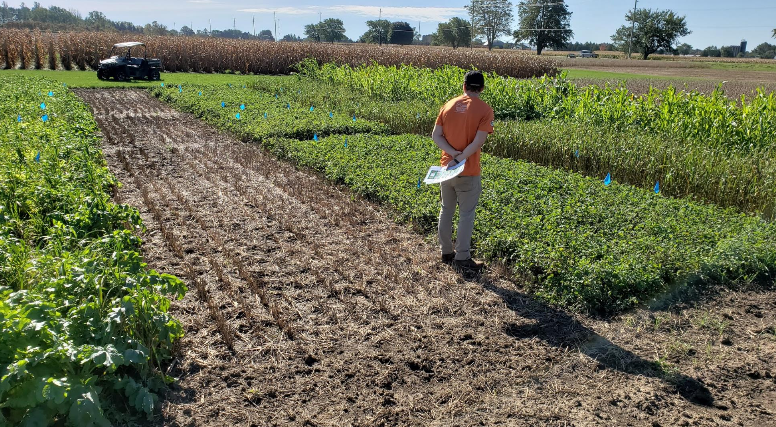Greater yields and improved soil health, with an eye on sustainable farming practices. That’s what researchers at the University of Guelph are looking for in a long-term cover cropping research project currently underway.
Cover cropping – the practice of growing plants on a field between crop cycles – is nothing new, it dates back centuries. It’s been shown to reduce water and wind erosion, as well as improve soil health.
It fell in popularity with the advent of synthetic fertilizers but is now seeing a resurgence in use, says Dave Hooker, research agronomist and associate professor at U of G who plays a key role in the study.
“Cover crops have become very popular these days just because we know how important soil health is for sustainability of the cropping system,” he said, noting the high cost of fertilizers is also a factor.
“Having something growing for as many months of the year as possible, harvesting that solar energy and converting that solar energy and carbon into food for soil microorganism, that is very important for sustainability of the system.”
That’s why, in 2017, the university launched a long-term study of cover crops at the Ontario Crop Research Centre sites in Elora and Ridgetown, looking at the impacts of cover crops on different crop rotations, using different tillage tools and different cover crop species, as well as various combinations of species.
Between the two sites, there are more than 1,100 research plots.
In reviewing the results, researchers are looking at drought resiliency, soil nitrogen status, surface water runoff, porosity and the quantity of organic matter produced by cover crops.
The idea, Hooker explained, is to determine which cover crops work best, and under what conditions, with the greatest environmental benefits as well as yields.
“Every cover crop species has its different pros and cons in terms of what it can provide to the system,” he said, using example of red clover, which takes nitrogen from the air and returns it to the soil. “Every farmer would have a different need or a different service required, something they want out of the cover crops.”
At The Pfisterer Farm in Kenilworth, they’ve been growing cover crops for two years.
“We haven’t really yet seen any tangible benefits, which is okay and expected,” said Jessica Pfisterer, who owns and operates the farm with her husband, Ryan.
Through the use of cover crops, they’re hoping to reduce the need for fertilizer to be applied on their fields; improve how water enters the soil and use up excess moisture, allowing them to plant earlier in the spring; and lessen erosion, while also assisting local pollinators.
This year they planted a mixture of peas, oats, barley and clover as their cover crop, which could also be used as feed for animals during the winter, though, Pfisterer said, wet conditions are currently preventing them from being harvested.
She’s interested in learning what comes of the research project.
With only five growing seasons under its belt, the study is “still in its infancy,” Hooker noted, adding he hopes it will continue for 15 to 20 years.
“The effects may take many years to measure,” he said. “That’s the value of the long-term trials.”



